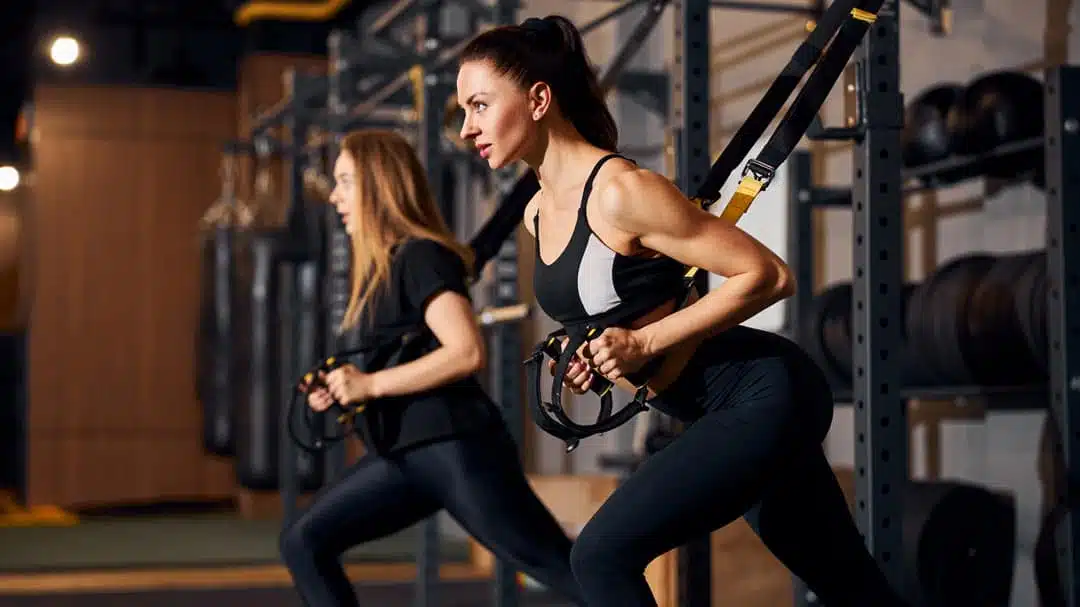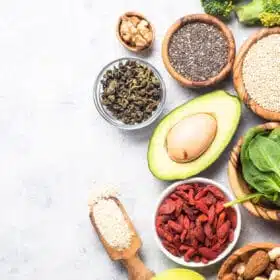Strength training and the right diet are worth it: define your body and make muscle building fun.
Muscles in women: Forget the old bodybuilder stereotype! Muscular women's bodies can be attractive and it's not always about aesthetics. Discover the fun of your strength and live pain-free thanks to strengthened muscles. Prepare for real strength with the right training and optimal nutrition. We show you the way to your dream body with our nutrition plans.
The free weight area in the gym for men? That was once! More and more women are discovering the benefits of strength training and claiming squat racks and other equipment. The result: athletic bodies and well-toned muscles that benefit us women in a variety of ways:
- 1. avoid pain Weak back muscles can cause headaches. Through targeted strength training, you can improve your posture and avoid pain and tension, as studies show. To avoid back pain, you should strengthen your back muscles regularly.
- 2. improved general fitness Many women focus on pure endurance sports for fitness and torture themselves through long runs. "This type of training may lead to weight loss, but muscle building shapes and tones the body much better," says personal trainer and weightlifter Elli Hachmann from Hamburg. If you want a stable body, you should lift weights regularly instead of running for hours.
- 3. boosts self-confidence Women benefit from strength training not only physically, but also mentally. "It feels great to move heavy weights and it boosts your confidence," says Hachmann. As you get stronger, you'll not only feel physically stronger, but invincibly good. Studies show that regular muscle training can also reduce depressive symptoms in everyday life.
- 4. Helps you lose weight An added bonus to building muscle is that it helps you lose weight. Studies show that not only does weight training use energy, but muscles continue to burn calories even when you're relaxing on the couch. "Muscle-building exercise automatically increases your basal metabolic rate. That means you can eat more without gaining weight," Hachmann says. The more muscle mass you have, the more energy your body can burn and the more calories you burn even when you're resting
Different types of muscles There are three types of muscles:
Skeletal muscles, cardiac muscles and smooth muscles. While cardiac muscles and smooth muscles function automatically without our having to control them (for example, in regulating circulation, breathing, metabolism and digestion), skeletal muscles, which are attached to the bones, can be specifically trained to stabilize the body.
Sports medicine distinguishes between two types of muscle fibers: fast and slow contracting. The slow contracting fibers are persistent, but not particularly strong or muscular. The fast fibers, however, are strong but not as persistent. The proportion of the two types depends on the function of the muscle and on the genes.
Unfortunately, you can't change the genetically determined type of muscle fiber, but you can get the most out of the fibers you have through targeted training. Low weight and high repetitions train the endurance fibers, while high weight and few repetitions promote the fast-strength fibers. By varying the weight, number of repetitions and rest time, you can improve your strengths and compensate for weaknesses, bringing variety to your workout.
Will strength training lead to massive muscle mountains?
A common misconception is that strength training automatically leads to excess muscle mass. But this is not the case. Genetics plays a big role, as women usually don't have enough testosterone and too much estrogen to build unusually large muscles.
Even if you have high testosterone levels, you still need a very strict diet and hard training to become a bodybuilder. However, it is important to note that both men and women have similar muscles and can be strengthened through proper training. Instead of looking like they are pumped up, women will look fit and toned through strength training. Who knows, you might just discover the joy of bigger and stronger muscles.
How to grow your muscles through training
The goal of muscle building training is to make your muscles bigger. You achieve this through hypertrophy training, which requires pushing your muscles beyond their usual performance level. Regular training to your performance limits is necessary to stimulate muscle growth.
This strong training stimulus leads to small tears in the muscle fibers, which can be felt as muscle soreness. The body repairs these fibers and they thicken to be better prepared for future stress. This important adaptation process is called supercompensation in fitness jargon.
How do I plan my muscle building workout?
Physical adaptations such as strength gains and muscle mass are achieved by challenging the body beyond its known limits. You determine the intensity of the training stimulus through the number of repetitions, load duration, weight and rest time. It is recommended that you use enough weight to allow just 1-2 clean reps at the end of a set. You may need to experiment a bit and increase the weight slowly.
For beginners, 3-4 sets of 8-12 repetitions each with rests of 45-90 seconds between sets are appropriate. Women usually need shorter rests than men. A good tempo for beginner women: 2 seconds for overhead, 1 second in static position, and 2 seconds for backward movement on an exercise. Example: 2 seconds for the downward movement in a push-up, 1 second in the lower position, and 2 seconds for the push-up.
Hachmann recommends beginners do 2 full-body workouts per week that target all muscle groups. If you work out 4 times a week, you can work out legs 2 times and upper body once. It is important to alternate workout days to avoid overloading in both muscle groups. Loaded muscles should have at least 2 days for recovery. Appropriate muscle building nutrition is also important. Our healthy, individual and flexible nutrition plans can help.
Cardio and muscle building - is that possible?
If you want to build muscle, you should do more strength training and less cardio. Although endurance training is not forbidden, too much of it can interfere with muscle building. Once a week you can go running at low intensity for 30-40 minutes to burn fat and regenerate, but on a separate day so as not to immediately reload the muscles you have used. For variety, you can add HIIT training once a week to stimulate the release of growth hormones, but no longer than 20 minutes and preferably after weight training to save energy for strength exercises.
Struggling to build muscle? These 5 reasons could be to blame:
- Fear of heavy weights: Many women shy away from using heavy weights when working out for fear of looking too broad or out of shape. However, it is important to push yourself to your performance limits and increase the weight regularly to effectively build muscle. If the exercises are performed cleanly and correctly, you can't go wrong and will see positive results.
- Too little protein: Protein is an important nutrient for building muscle. Women tend to be less able to utilize protein than men and therefore require a higher amount. It is recommended to consume 2 grams of protein per kilogram of body weight daily. Here, it is important to make sure you have a good, animal source of protein. Vegan and vegetarian women should even consume 3 grams of protein per kilogram of body weight.
- The wrong exercises: Biceps curls and sit-ups are good for the biceps and abs, but for muscle building, basic exercises and exercises that target large muscle groups should not be neglected.
- Improper execution: It is important to perform the exercises correctly and to use the full range of motion. Do not stop halfway, otherwise muscles may shorten. The movements should be controlled and performed with force, not momentum.
- Breaks that are too long: During training, it is important to observe the break times exactly. A timer can be helpful here. It is important to consistently follow through with the training in order to save as much time and energy as possible and to be able to devote yourself to other things more quickly.
Burning muscles - What does it mean?
It used to be thought that burning in the muscles during exercise was a sign of overwork and that lactate, which is produced in the muscle during exercise, was responsible for the acidity. But studies, such as the University of Wisconsin La Crosse, show that lactate not only causes the burning, but can also serve as an energy source, firing up the muscles. So a slight burning sensation in the muscle during exercise is a good sign. However, it is important to give the body two days to recover after a training session to avoid overtraining. Strength training and a healthy diet support the strengthening of the muscles. So get to work!




